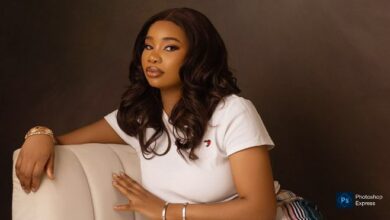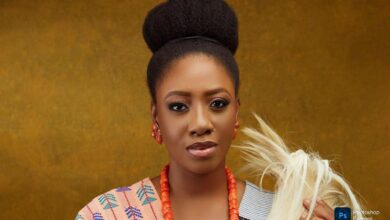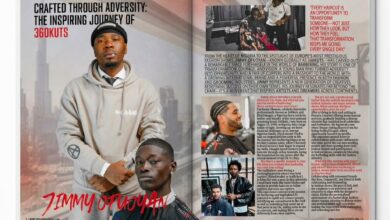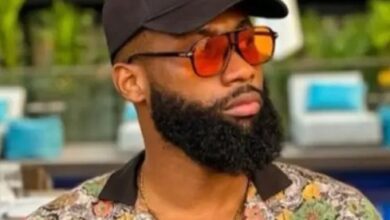South Sudan’s reputation as African nation for home to fashion’s favourite models grows
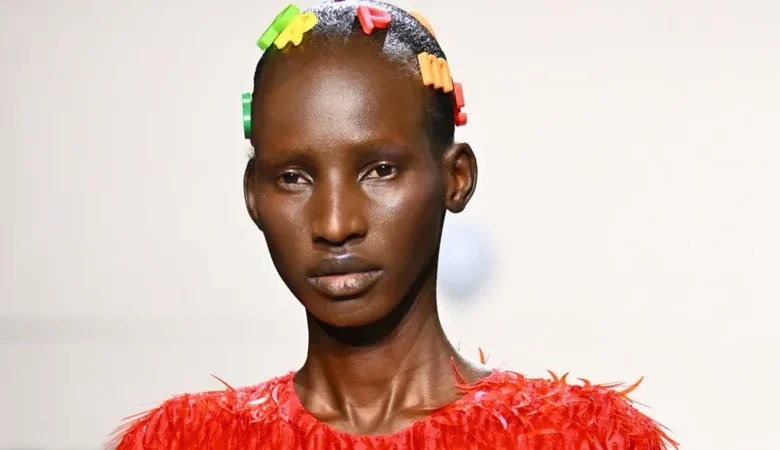

Arop Akol has been travelling around the fashion world over the last three years
Wearing an understated but chic outfit, flowing braids and a dewy, make-up free face, Arop Akol looks like your typical off-duty model.
She sinks into the sofa at the offices of her UK agency, First Model Management, and details the burgeoning career that has seen her walk runways for luxury brands in London and Paris.
“I had been watching modelling online since I was a child at the age of 11,” Akol, now in her early twenties, tells the BBC.
In the last three years, she has been streamed across the world while modelling, even sharing a runway with Naomi Campbell at an Off-White show.
Travelling for work can get lonely, but Akol is constantly bumping into models from her birth country – the lush, but troubled South Sudan.
“South Sudanese people have become very well known for their beauty,” says Akol, who has high cheekbones, rich, dark skin and stands 5ft 10in tall.
Flick through a fashion magazine or scan footage of a runway show and you will see Akol’s point – models born and raised in South Sudan, or those from the country’s sizable diaspora, are everywhere.
They range from up-and-comers, like Akol, to supermodels like Anok Yai, Adut Akech and Alek Wek.
After being scouted in a London car park in 1995, Wek was one of the very first South Sudanese models to find global success . She has since appeared on numerous Vogue covers and modelled for the likes of Dior and Louis Vuitton.
And the popularity of South Sudanese models shows no signs of waning – leading industry platform Models.com compiles an annual list of modelling’s top 50 “future stars” and in its latest selection, one in five models have South Sudanese heritage.
Elsewhere, Vogue featured four South Sudanese models in its article about the “11 young models set to storm the catwalks in 2025”.
“The expectation of what a model should be – most of the South Sudanese models have it,” says Dawson Deng, who runs South Sudan Fashion Week in the country’s capital, Juba, with fellow ex-model Trisha Nyachak.
“They have the perfect, dark skin. They have the melanin. They have the height.”
Lucia Janosova, a casting agent at First Model Management, tells the BBC: “Of course they are beautiful… beautiful skin, the height.”
However, she says she is unsure exactly why fashion brands seek out South Sudanese models over other nationalities.
“I’m not able to tell you because there are lots of girls who are also beautiful and they are from Mozambique, or Nigeria, or different countries, right?” Ms Janosova adds.
Akur Goi, a South Sudanese model who has worked with designers like Givenchy and Armani, has a theory.
She believes South Sudanese models are in demand not just for their physical beauty, but for their “resilience” too.
Goi was born in Juba but as a child she moved to neighbouring Uganda, like Akol and hundreds of thousands of other South Sudanese.
Many fled in the years after 2011, when South Sudan became independent from Sudan.
There were high hopes for the world’s newest nation, but just two years later a civil war erupted, during which 400,000 people were killed and 2.5 million fled their homes for places like Uganda.
Although the civil war ended after five years, further waves of violence, natural disasters and poverty mean people continue to leave.
Recently, fighting between government and opposition forces has escalated – sparking fears the country will return to civil war.
After leaving a war-weary South Sudan for Uganda, Goi’s “biggest dream” was to become a model.
Fantasy became reality just last year, when she was scouted by agents via Facebook. For her very first job, she walked for Italian fashion giant Roberto Cavalli.
“I was super excited and ready for my first season… I was really nervous and scared but I said to myself: ‘I can make it’ – because it was a dream,” Goi says, speaking to the BBC from Milan, having flown out for a job at the last minute.
But some South Sudanese models have had more tumultuous journeys.
An investigation by British newspaper the Times found that two refugees living in a camp in Kenya were flown to Europe only to be told they were too malnourished to appear on the runway.
After completing modelling jobs, several others were informed that they owed their agencies thousands of euros – as some contracts specify that visas and flights are to be repaid, usually once the models start earning money.
Akol says she encountered a similar issue. When she was scouted in 2019, the agency in question asked her to fork out for numerous fees – fees which she now knows agencies do not normally request.
“I was asked for money for registration, money for this, for that. I couldn’t manage all that. I’m struggling, my family is struggling, so I can’t manage all that,” she says.

